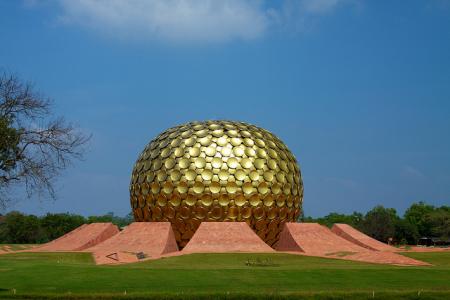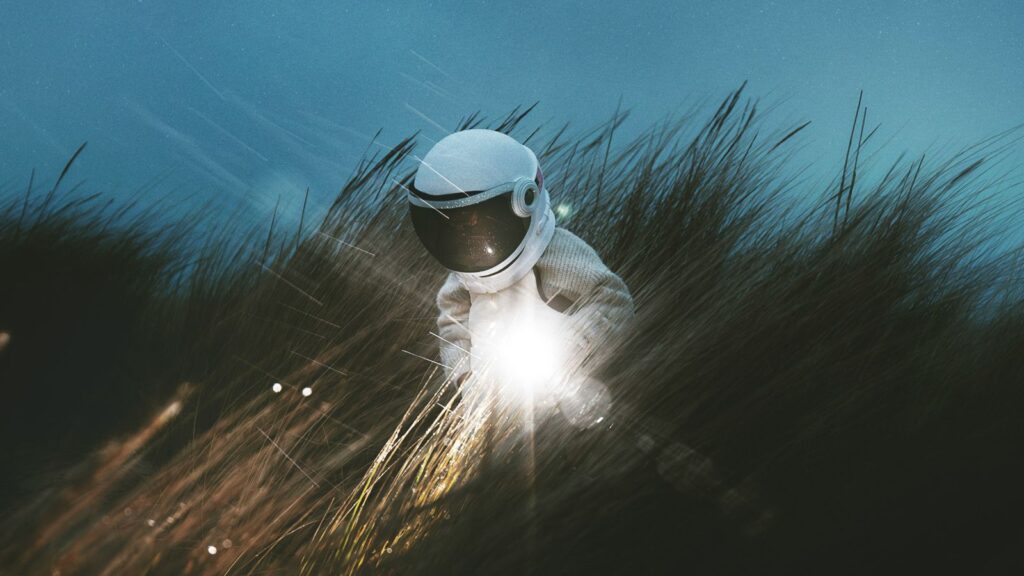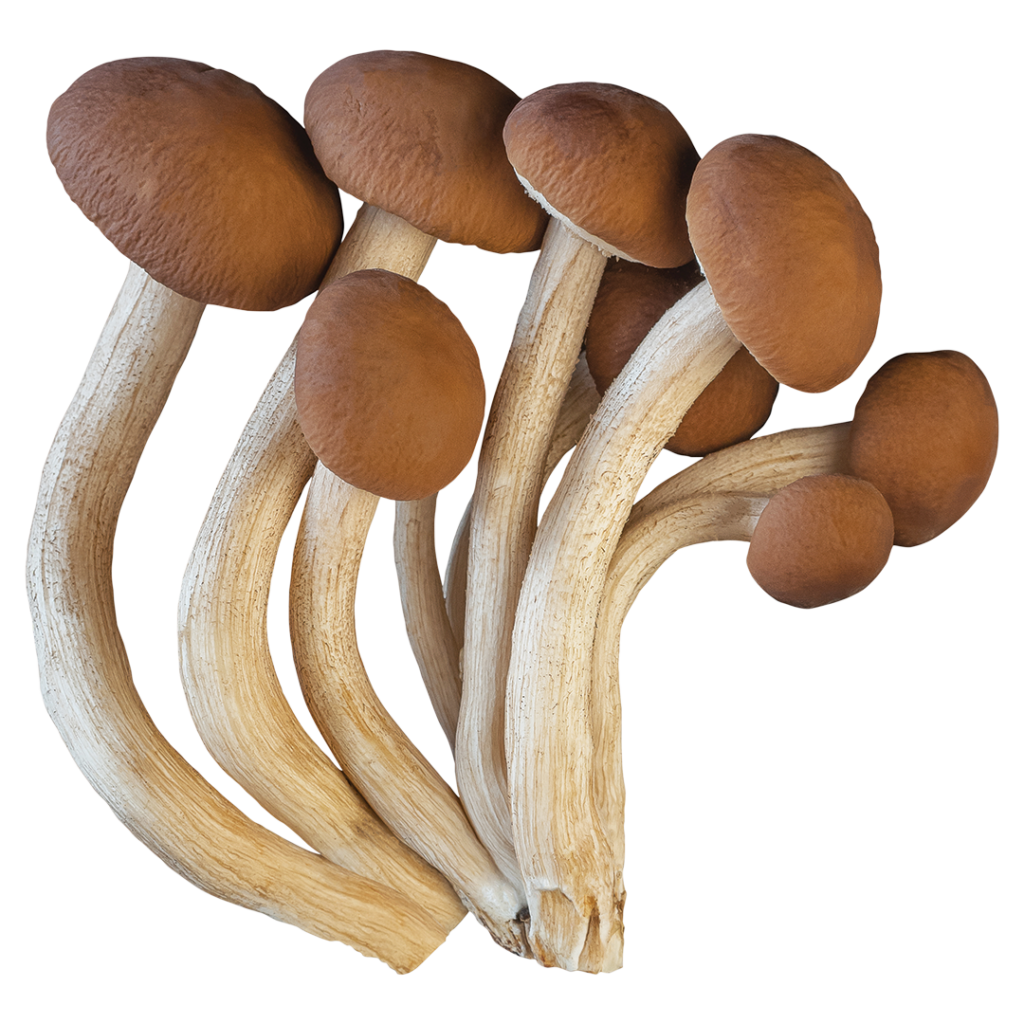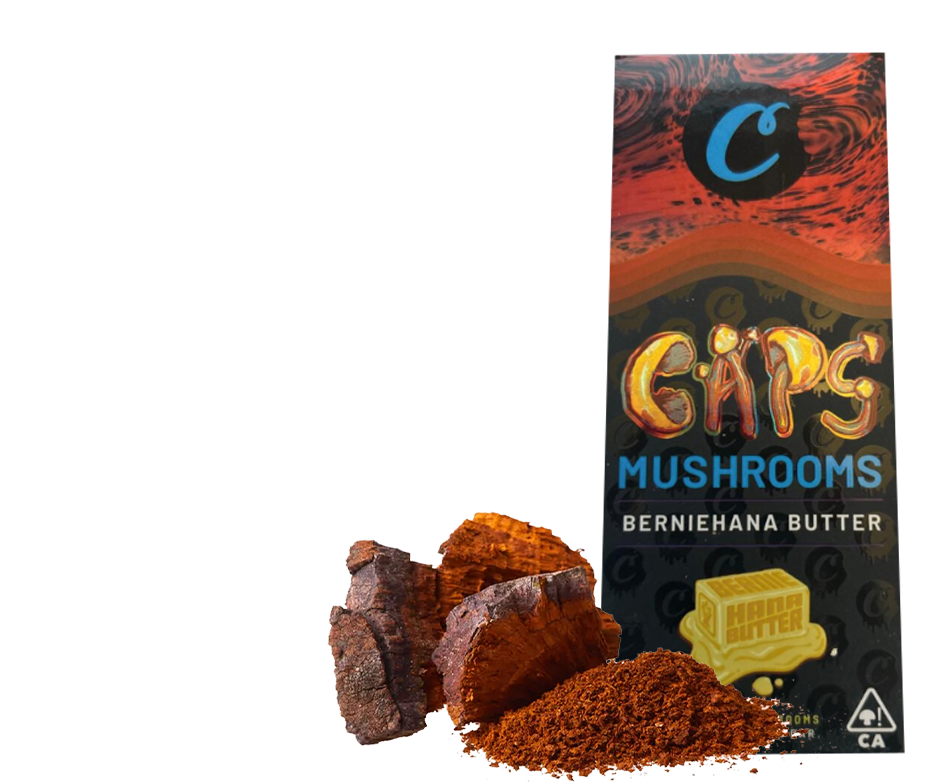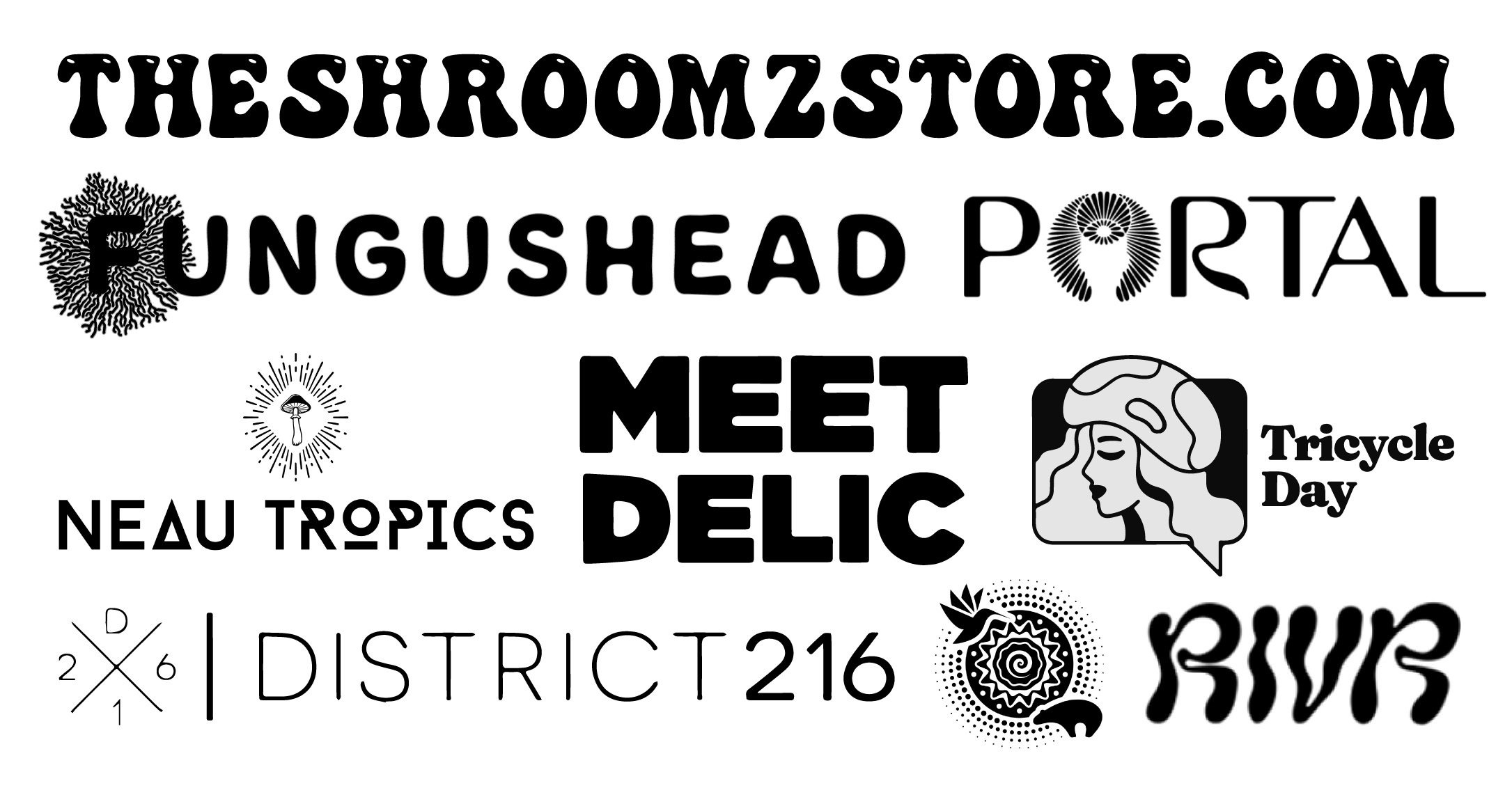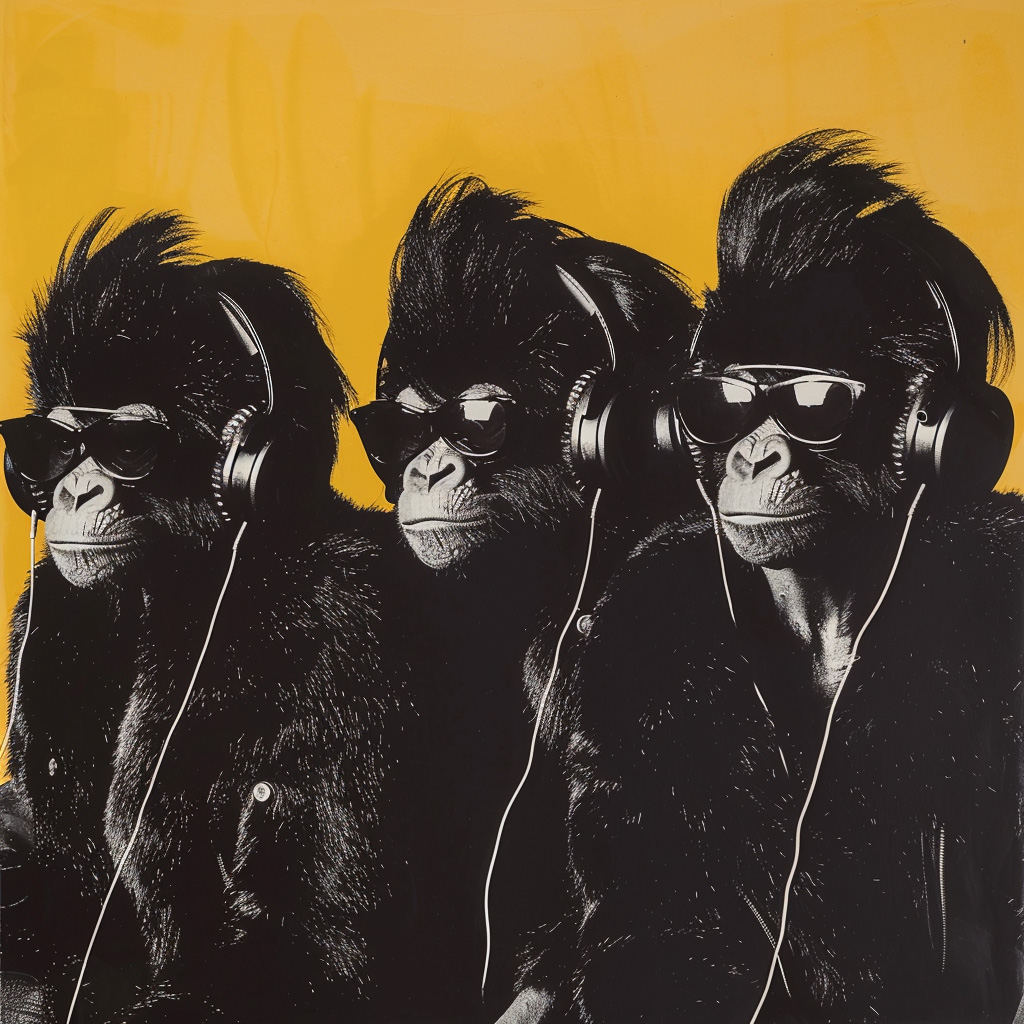“The
greatest future triumph of the thinker will come when he can persuade the
individual integer and the collective whole to rest their life-relation and
its union and stability upon a free and harmonious consent
and self-adaptation, and shape and govern the external
by the internal truth rather than to constrain the inner
spirit by the tyranny of the external form and
structure.”
~ Aurobindo
Ghose, The
Synthesis of Yoga
Aurobindo Ghose (also known as Sri
Aurobindo) was a Bengali mystic and political activist who wrote
about political and social theory, philosophy, religion, and
spiritual poetry. Some of his major works are The Synthesis of Yoga,
The Life Divine, Secrets of the Vedas, Essays on the Gita, The Human
Cycle, and The Ideal of Human Unity. The latter of these works, in
which Aurobindo deals with social concerns and presents a
philosophical ideal of what a future idealized society should be,
will be the focus of this article. I will analyze Aurobindo's
projections of what would constitute an ideal society, and compare
this with the real-life scenario of Aurobindo's ashram, and the
existing commune of Auroville in Puducherry, south India. My goal is to
lay out a theoretical picture of what a future society might look
like if Aurobindo's views, methods, and practices, were applied on a
wide scale, and formed the basis of a spiritual ethics of social
action. Since this is unlikely to ever actually occur, this paper
will be speculative, in the vein of a “thought experiment” to use
a popular term. The major technique, or ability, which would form the
basis of this utopian society based on Aurobindo's thought is the
power of telepathy–the sharing of thoughts at distance between
people without external verbal communication.
At the beginning
of The Ideal of Human Unity Aurobindo writes “while it is possible
to construct a precarious and quite mechanical unity by political and
administrative means, the unity of the human race, even if achieved,
can only be secured and can only be made real if the religion of
humanity, which is at present the highest active ideal of mankind,
spiritualises itself and becomes the inner law of human life”
(Heehs, 1998, 148). This passage strikes a chord with me, and I feel
that Aurobindo's conclusion is correct–the unification of the human
race in a peaceful and constructive manner will necessarily utilize a
means of government, forms of social communication, and of religion
and personal ethics, which seeks to find and establish a common
ground of humanity and equality. Within our current mode of society
and governance we have all kinds of codified hierarchies and
insider/outsider distinctions. Our current political system is based
on the ideological division of supposed binary opposites; there is
left wing/right wing, Democrat, Republican, and something else on the
periphery of that called “Independent.” There is a division
between the wealthy who more easily wield the tools of political
power, and the disenfranchised poor who cannot afford lobbyists and
do not generally have their views and needs well represented within
our current political system. In this way, political power is often
consolidated into the hands of the few, the affluent, and those
families who have traditionally held political positions for the past
centuries. This divisive and complicated system seems to do the
opposite of what Aurobindo sees as the ideal, which is to create a
psychic and spiritual unity of humans that subsequently informs and
substantiates government.
In the preceding passage Aurobindo
presents us with the intriguing position that the “religion of
humanity” must “spiritualise itself and become the inner law of
human life.” What does this mean? What is the distinction Aurobindo
is making here between religion and spirituality? I read this to mean
that the “religion of humanity” i.e. the outward forms of
religious expression we see as churches, mosques, synagogues,
temples, etc. needs to turn inward and become personalized,
“spiritualised,” within the experience of the individual
themselves. Aurobindo's term “inner law” means a divinely
inspired intuitive understanding of ethics. This would mean no more
external religious interpretations of truth, and no more political
interpretations of truth would be required. No “authorities”
beyond ones own self would be relied upon for definitions or
boundaries of reality. In Aurobindo's words from The Synthesis of
Yoga, “internal truth” would “shape and govern the external,”
“rather than constrain the inner spirit by the tyranny of the
external form and structure.” Is this possible? What would the
implications be? How could this kind of self-knowing governance come
about?
In Aurobindo's writings he saw the future state of
governance as probably having one or two possible organizations,
“there is likely to be either a centralised World-State or a looser
world-union which may be either a close federation or a simple
confederacy of the peoples for the common ends of mankind. The last
form is the most desirable, because it gives sufficient scope for the
principle of variation which is necessary for the free play of life
and the healthy progress of the race” (Heehs, 1998, 151). Aurobindo
believes that a World-State or one-world government would inevitably
become stagnant, monolithic, and unresponsive to the needs of the
people; the triumph of the World-State government would be “the
triumph of the idea of mechanical unity or rather of uniformity”
(Heehs, 1998, 152). In contrast, Aurobindo thinks that “a
centralised socialistic State may be a necessity of the future, once
it is founded, but a reaction from it will be equally an eventual
necessity of the future” (Heehs, 1998, 152). However, both of these
efforts will be ultimately futile–or rather, impermanent–attempts
to solve the problem of governance and social responsibility.
Aurobindo saw this happening in great cycles of social change which
were inevitable because of the systemic organization structures of
these forms of government. He writes, “the greater its pressure [to
control peoples' lives], the more certainly will it be met by the
spread of the spiritual, the intellectual, the vital and practical
principle of Anarchism in revolt against that mechanical pressure.
So, too, a centralised mechanical World-State must rouse in the end a
similar force against it and might well terminate in a crumbling up
and disintegration, even in the necessity for a repetition of the
cycle of humanity ending in a better attempt to solve the problem”
(Heehs, 1998, 152).
Why are these forms of government destined
to fail, or become inadequate, according to Aurobindo? That is
because they are based on formations of external truth, social
symbols, and arbitrary divisive distinctions rather than an organic
psychic unity of humanity which in itself gives rise to government.
Aurobindo saw the latter as an undreamt political possibility which
could possibly form the basis of a future government and social
system. In The Ideal of Human Unity Aurobindo writes,
The saving power needed is a new
psychological factor which will at once make a united life necessary
to humanity and force it to respect the principle of freedom. The
religion of humanity seems to be the one growing force which tends in
that direction; for it makes for the sense of human oneness, it has
the idea of the race, and yet at the same time it respects the human
individual and the natural human grouping. But its present
intellectual form seems hardly sufficient. The idea, powerful in
itself and in its effects, is yet not powerful enough to mould the
whole life of the race in its image. For it has to concede too much
to the egoistic side of human nature, once all and still nine-tenths
of our being, with which its larger idea is in conflict (Heehs,
1998, 152).
This is a remarkably insightful passage
about the status of modern religion. Aurobindo views the “religion
of humanity” (which I take to mean the religions of humanity) as a
positive force for human unity, but one that is ultimately still
mired in the dualistic world of egoistic concerns and externally
based distinctions. He comments that the egoistic side of human
nature is in conflict with the larger idea of human unity which
religion seeks to promote and facilitate. We can see how political
hierarchies and religious hierarchies both create insider/outsider
distinctions which necessitate different levels of political
empowerment.
If we would like to critically define the current
status of our Democracy in realistic terms, we would probably be
forced to conclude that American government is not, in fact, a
Democracy, but rather a Republic, or a “representative Democracy,”
which, unfortunately has become increasingly less and less
“representative” and increasingly oppressive of personal freedoms
rather than supportive of them. Recent legalization of previously
illegal and invasive wiretapping spy procedures upon unsuspecting
citizens is only one of many examples of the development of an
authoritarian surveillance and police state which has seems to have
become the trend in American government (1). To be even more specific
about definition in light of the facts, we might conclude that
American government is actually a corporate oligarchy, in which an
elite group of financially powerful corporate interests dictate
public policy and political decision from behind the scenes. The
industry of political lobbying by wealthy corporations is hardly a
secret, but the real implications of this for the power structure of
American politics is not well understood. With the recent removal of
corporate restrictions on campaign funding, the veil of influence
that corporations exert over American politics is now even more
transparent (2).
Acknowledging that this is in fact the case,
we might then accurately define American political system as a
Fascist oligarchy. Here I am adopting the incendiary term “Fascist”
with well-thought intent. I mean this designation of “Fascist” in
the sense that the Fascist Italian dictator Benito Mussolini meant
when he said, “Fascism is the merger of corporate and state power”
as was described in the Fascist manifesto published in Il Popolo
d'Italia on June 6, 1919 (3). With the recent corporate “bailout”
under the heading of the Troubled Assets Relief program (TARP) in
which billions of taxpayer dollars went directly into the pockets of
formerly wealthy banks, and many blatant and documented mis-uses of
this money, the corruption of the state in terms of the influence
military-industrial complex and Wall Street upon American politics,
the “merger of corporate and state power” to use Mussolini's
phrase, has never been more evident (4). The concerns of Aurobindo
are quite relevant to our current political landscape.
Our
political salvation, according to Aurobindo, lies in the
establishment of psychic unity which has its grounds in religious
truth, but would also be different from current religious
understanding. Towards the end of The Ideal of Human Unity
Aurobindo describes what this might look like.
A spiritual religion of humanity
is the hope of the future. By this is not meant what it ordinarily
called a universal religion, a system, a thing of creed and
intellectual belief and dogma and outward rite. Mankind has tried
unity by that means; it has failed and deserved to fail, because
there can be no universal religious system, one in mental creed and
vital form. The inner spirit is indeed one, but more than any other
the spiritual life insists on freedom and variation in its
self-expression and means of development. A religion of humanity
means the growing realisation that there is a secret Spirit, a divine
Reality, in which we are all one, that humanity is its highest
present vehicle on earth, that the human race and the human being are
the means by which it will progressively reveal itself here. It
implies a growing attempt to live out this knowledge and bring about
a kingdom of this divine Spirit upon earth. By its growth within us
oneness with our fellow-men will become the leading principle of all
our life, not merely a principle of cooperation but a deeper
brotherhood, a real and an inner sense of unity and equality and a
common life (Heehs, 1998, 154).
Aurobindo stresses the point that this
unity would not be based in a system, or a creed, or belief, or
ritual. These are the things which traditionally constitute religion.
As Aurobindo points out, by and large the project of religion has
failed, if its attempt has been to help humanity realize its divine
unity. Aurobindo's solution is for us to realize that there is “a
divine Reality, in which we are all one.” This understanding would
necessarily transcend the boundaries of nationality, race, religion,
economics, because its source is deeper than any of these more
superficial traits of humanity. Getting to the spiritual source of
humanity is where we would find the basic commonality and real
oneness which, if properly understood and communed with, could
possibly foster a prevalent psychic unity among all humans. For this
to truly happen, the realization would have to be based in a mystical-type
consciousness of non-duality. This psychic unity would be grounded in a level of
communication deeper and more primal than verbal language. To
accomplish this humanity would have to evolve a capacity for
consistent telepathic communication.
While this may seem like
a bizarre or radical conclusion, there is actually a strong basis for
this concept within Aurobindo's life and practice. Telepathy is
thought to be one of the siddhis, or magical powers, which may be
gained from following a spiritual path such as Tantra. Some of the
siddhis mentioned in Hindu literature may be relevant to the modern
scientific term “telepathy.” In The Lives of Sri Aurobindo,
historian Peter Heehs writes,
Following an ancient tradition,
Aurobindo spoke of eight siddhis: two of knowledge, prakamya and
vyapti; three of power, aishwarya, ishita, and vashita; and three of
the body, mahima, laghima, and anima. The siddhis of knowledge
constitute what is known in the West as telepathy. The siddhis of
power are applications of will by which one mind can influence
another. The siddhis of the body overlap with the next chatusthaya,
the quaternary of the body (Heehs, 2008, 240).
Traditionally it is thought that with
enough concentration and practice, one could develop and perfect the
use of these types of powers. Certainly Aurobindo took these ideas
seriously in his own practice. Aurobindo even documented the progress
of his meditative and vigilant spiritual practice in the “Record of
Yoga,” a journal which he kept. Heehs writes of Aurobindo's partial
mastery of these powers, “By 1911 he was able to report that he
could 'put himself into men and change them,' that he 'had been given
the power to read men's characters and hearts, even their thoughts'
(here he added: 'but this power is not yet absolutely complete'),
that he could guide action 'by the mere exercise of will,' and that
he was 'in communication with the other world' (adding that this was
'yet of a troubled character')” (Heehs, 2008, 242). There are
several stories of Aurobindo's attempts to directly influence reality
through the force of his psychic will, and even encouraging other
people to do this as well (5). Yet Aurobindo's attempts were not
entirely successful; for the most part he was only partially
successful in these types of experiments. However, in the context of
understanding these siddhi powers and how Aurobindo conceived them,
we may better understand Aurobindo's “ideal of human unity” and
how he might have pictured the future development of humanity in the
areas of politics, religion, society, and the spiritual
self.
Aurobindo believed, as was the tradition surrounding
siddhis, that any person regardless of class, race, nationality, or
status, could, with proper discipline and attention, develop these
kinds of siddhi powers as a natural result of spiritual practice. In
this understanding we could consider that perhaps these powers are
currently latent within the whole of humanity, accessible, but
usually only explored by certain gifted and focused people such as
Aurobindo. This means that at the present time only a small few of
humans are able to use these sorts of powers. However, with proper
training and practice, anyone could learn to master these forms of
extra-sensory perception and mental extension.
This makes
sense in terms of Aurobindo's cosmology: we could consider that these
siddhi powers are an aspect of the latent, yet omni-present
foundation of the “supermind” or “supermental intellect”
which Aurobindo describes as the trajectory of human consciousness
towards a teleological end of ultimate psychic unification (6).
Perhaps the ability of telepathy would be a consequential result of
the “descent of the Overmind” that Aurobindo described. If
Aurobindo's premise is true, and our individual minds are immersed in
some kind of larger, more integrated, more informed, “supermind”
of which we are individualized manifestations, and this “supermind”
is actively creating and influencing us towards an end of psychic
unity, we might conclude that eventually the siddhi powers could
become a natural and everyday part of human life. The most important
of these, within the context of Aurobindo's argument for psychic
unity and self-governance, are the siddhis associated with telepathy
and the sharing or extension of mental functions between minds:
prakamya and vyapti.
What is telepathy? In
Telepathy and Clairvoyance: Views of Some Little Investigated
Capabilities of Man Dutch professor W.H.C. Tenhaeff, former Director
of the Parapsychological Institute of the State University of Utrecht
writes that telepathy is “the receipt in one's mind of thoughts
that emanate from the consciousness of another person” (Tenhaeff,
1957, 23). According to Roger Luckhust's book, The Invention of
Telepathy, (Oxford University Press, 2002) the term “telepathy”
was coined in December 1882 in the first volume of the house journal
of psychical research: 'we venture to introduce the words
Telaesthesia and Telepathy to cover all cases of impression received
at a distance.' My first chapter tracked the preconditions for the
emergence of this object within the perturbations of scientized
modernity in the 1870's, working with the insight that 'the place of
knowledge lays down the conditions for the appearance of the objects
of science, for their validation as real, and for the terms on which
they are knowable'. (Luckhurst, 2002, 60).
To construct a more
modern definition for “telepathy” as it has come to be understood
we might say something like “mental impression, cognition, and
information exchange at a distance, sometimes between two or more
individual minds.” However, as Aurobindo noted, there had already
been a philosophical system for describing this type of “psychic
action at a distance” for centuries before the term was coined by
scientists in 1882: the siddhis had long since been noticed, and well
documented within the religious and mystical literature of Hinduism.
Westerners scientists like Frederic Myers who were interested in
telepathy and similar evidences of extra-sensory perception and
psychic ability, were studying phenomena which had already been
fairly well understood, and even mastered by advanced practitioners
of Tantra, for thousands of years. Aurobindo himself can be counted
as an example of this tradition, although technically he was not a
Tantric.
One comparison that could be made of Aurobindo's
model would be with the Western philosophical idea of the noosphere,
as developed by authors such as Russian geochemist Vladimir Vernadsky
and the French Jesuit priest Pierre Teilhard de Chardin (7). The
noosphere is conceived of as a layer of thought-energy which envelops
the planet in a similar manner as our atmosphere does, but in an
immaterial sense. Scientists have identified many energetic layers
which surround and envelop the earth (even though we may not be able
to directly perceive them), including the bio-magnetic layer produced
by the earth's core, layers of radio waves, sound, light, gravity,
the Van Allen belt of charged plasma, and many other forms of
radiation (8). Some people have taken seriously the idea that the
mental substance of human thought might form a “layer” of energy
which could theoretically be tapped into and accessed. The “Akashic
record” is one such concept found in the literature of the occult
(9). Research from the Global Consciousness Project carried on by the
Institute of Noetic Sciences has tried to suggest a method for study
of the collective information patterns within the whole of human
consciousness. A statement on their website reads:
The Global
Consciousness Project, also called the EGG Project, is an
international, multidisciplinary collaboration of scientists,
engineers, artists and others. We collect data continuously from a
global network of physical random number generators located in 65
host sites around the world. The archive contains more than 10 years
of random data in parallel sequences of synchronized 200-bit trials
every second. Our purpose is to examine subtle correlations that may
reflect the presence and activity of consciousness in the world. We
predict structure in what should be random data, associated with
major global events. When millions of us share intentions and
emotions the GCP/EGG network data show meaningful departures from
expectation. This is a powerful finding based in solid science.
Their idea is that
important global events which imprint the collective psyche could be
correlated with statistical shifts in random number generators.
Eventually they hope to be able to read this data and even develop it
as a predictive tool.
One could argue that the Internet,
particularly in the form of recent social networking websites, is
already functioning as a crude pseudo-telepathic superstructure of
human thought and information exchange. José Argüelles
discusses this possibility in his book Time and the Technosphere.
Argüelles argues that the technosphere, meaning the Internet and
the externalized technological communications network, may be a
pre-cursor to the development of an organically and biologically
integrated telepathic network which would link all of the minds on
the planet together into a single planetary consciousness or perhaps
a diverse, multi-faceted group consciousness (10). Observing how the
technological evolution of computing has made incredible, almost
unthinkable, leaps and bounds in the past fifty years, we could
imagine that in the next two hundred years there will be some amazing
developments in information technology. The trend in information
technology seems to be the development of an increasing personal
intimacy and information exchange between geographically distanced
groups of people, using the machines as the interface, and an
increasing trend to embed our personalities and habits within the
external technological infrastructure of the Internet through social
networks, etc. The end result, which may already be partially
visible, seems to be the establishment of a collective personality
based on the information, perceptions, and input of individuals–all
mediated by technologies which are becoming increasingly integrated
to be compatible with the biological system of the human body.
In
modern science there is still an ongoing and heated debate amongst
scientists as to the validity of such psychic powers, or psi, as the
psychic energy is sometimes called. The institutions of science have
unfortunately been extremely squeamish about approaching these kinds
of phenomena. The reason is probably because the necessary
conclusions of the truth of psychic phenomena, particularly things
like telepathy and clairvoyance, would directly undermine the
established materialist view which is the fundamental and
indispensable foothold and basis of modern science. For scientists to
include psychic phenomena into the conventional view of what human
is, they would need to rewrite much of the known science relating to
human mental functioning to include the reality that the human spirit
is somehow able to transcend the boundaries of the material world in
a way which is still, on the whole, not comprehensible by current
science.
However there are examples of intrepid scientists who
have dared to breach this experimental ground. Some scientists such
as Dr. Dean Radin and Dr. Charles Tart, have dedicated their careers
to ask some of these questions, and studying the effects of psi in a
laboratory setting (11). There has also been considerable interest in
psychic abilities within the studies of the governmental intelligence
agencies such as the CIA, which has conducted numerous projects to
study psychic ability, and use trained psychics to carry out various
tasks related to intelligence gathering (12). The “paranormal” as
it is called is an area of science which seems to frighten and
disconcert many mainstream scientists, but in the future it could
become a promising area of scientific study. As Sir Cyril Burt writes
in the preface to The Mind Readers: Some Recent Experiments in
Telepathy,
During the last few decades, current beliefs in
almost every branch of science have undergone a revolutionary change.
The little we think we understand turns out to be but a fraction as
compared with what still defies our comprehension. No longer
therefore need we feel unduly perturbed by new facts or new phenomena
undreamt of in Horatio's philosophy or in Tait and Thomson's physics.
The plain duty of the scientist is neither to reject nor to neglect
these seeming oddities. Only by concentrating on the rare and elusive
clues that indicate cracks and inadequacies in the orthodox doctrines
of today can genuine progress be achieved (Soal, 1960, 14).
I
suspect that once this field of study is finally reviewed by
mainstream science in a reasonable and sensible way, much new data
about the experience of psychic phenomena and the immaterial
components of human consciousness might be learned. Until then,
phenomena like telepathy are relegated to fringe science and the
pages of religious and mystical literature such as the tradition of
Sri Aurobindo. Yet if we consider this assertion that some
individuals can develop means of communication that is more
internalized, more deeply originated and deeply felt, than verbal
communication–as Frederick Myers, Dean Radin, Charles Tart,
Teilhard de Chardin, and Aurobindo Ghose have suggested–what would
be the conclusions of this? If this ability could be trained and
developed into a global communications network, what implications
might there be for future forms of political and social
organization?
I can imagine a world in which children are taught from
birth and encouraged to develop their psychic and
spiritual powers, in terms of dreaming, telepathy, etc. If these
educational programs were successful perhaps a basic commonality of
thought and mental substance could be achieved, maybe similar to
Aurobindo's concept of the “supermind” directly manifest and
utilized as the primary means of communication. Writing and texts
would become secondary to the direct experience of telepathic
transmission. Within this mental superstructure, true Democracy, i.e.
self-governance, could be more easily achieved. The general
organization might function like this: autonomous communes,
telepathically linked, which define for themselves their own rules
and behaviors, without any nation states, or religions, to dictate
the norms of behavior and social communication. This would be similar
to Aurobindo's concept of a future “loose world-union” or
“confederacy” of states. This might be along the lines of
Marshall McLuhan's concept of the “global village” which he saw
as a possible future of social organization (13). Howard Bloom's book
The Global Brain might also describe what this kind of social
organization could resemble (14). This form of organization might
also resemble Gandhi's idea for India's ideal form of government,
resembling the tribal village councils of olden times (15).
I
can imagine a kind of telepathic council of all citizens of a “global
village” or autonomous communes, where they would gather to make
decisions, based not only on materialistic rationalization and logic, but
also emotional empathy and deep, experiential understanding of others
and their needs. This would be an implicitly ethical system, based on
intuitive ethics which would be debated and formulated by each
“global village” or autonomous commune separately. If someone
broke the ethical rules there would not be a system of punitive and
psychologically damaging prison or physical punishment, but rather an
expulsion and social ostracization similar to the village councils
described by Gandhi. In effect, the social punishment would be that
if you can't get along with your peers, you have to find another
place to live and another group of people who you can get along with.
This form of social punishment might prove to be more effective than
the currently disappointing failure of punishment “rehabilitation”
which is the methodology employed by the current U.S. prison system.
Basing a society on cooperation and inclusiveness rather than
competition and social hierarchies could be helpful in solving some
of our modern problems.
For real-life examples of how this
form of society could actually play out, we can look at existing
communes such as Auroville, and how they are organized and function.
To get a sense of the ideals of the township of Auroville we can examine their
charter, presented by Auroville founder Mirra Alfassa, also known as “The Mother,”
with whom Aurobindo lived in his ashram. This charter, given at the
inauguration of Auroville in 1968, consists of four main points:
1. Auroville belongs to nobody
in particular. Auroville belongs to humanity as a whole. But to live
in Auroville, one must be a willing servitor of the Divine
Consciousness.2.
Auroville will be the place of an unending education, of constant
progress, and a youth that never ages.3.
Auroville wants to be the bridge between the past and the future.
Taking advantage of all discoveries from without and from within,
Auroville will boldly spring towards future realisations.4.
Auroville will be a site of material and spiritual researches for a
living embodiment of an actual Human Unity
(Auroville.org).
Auroville, also called the “City of
Dawn” is designed in a manner that is fitting of Aurobindo's
personality: its rules are permissive, open, tolerant, but the
dedication to spiritual work and community building is strong,
following the example of Karma yoga. There is a strict application
process and several levels of residence or membership within the
community, entailing different privileges and responsibilities.
Leadership roles are shared amongst different people at different
times. The population is remarkably diverse, with more than 2,000
permanent residents coming from over 40 countries (16).
A
section of the Auroville website titled “Toward a Human Unity”
applies Aurobindo's philosophical views to the modern circumstances
of Auroville. They describe a new “truth-consciousness” which
will evolve human society toward a “spiritual age of
humanity.”
This 'spiritual age of humanity' then will
represent a transformation in the nature of man as momentous as the
appearance of the thinking mind on earth. In the same way as for
millennia the mind was the centre of our life, so, in the new age
opening for humanity, or 'supra-mental' age, the soul will become the
centre of all life and activities. A new stage in the evolution of
man has already begun; a new consciousness, higher than the mind, a
truth-consciousness, as Sri Aurobindo said, in which the dualities,
hesitations and limitations of the mind and the greed and blindness
of the ego will no longer exist, has already started to appear, and
all the upheavals and convulsions that are at present so painfully
tearing our earth are the outward signs of this evolutionary crisis.
This new consciousness is already at work in the atmosphere of the
earth: we can connect with it, we can call it in ourselves, we can
use it to transform our entire nature and consequently the world in
which we live. It is in this wide and far-reaching sense that
Auroville is dedicated to human unity. All are
invited.
While
Auroville and Aurobindo's vision are worthwhile ideals, the commune may have
not always lived up to the concept of “a living embodiment of an
actual Human Unity.” Auroville is a functional and vibrant commune,
but it is still far from the vision of a telepathic
utopia.
Aurobindo himself realized that this process of
“descent of the supramental force” was actually a gradual and
slow process which was not likely to manifest in terms of an
overnight revolution. Rather, over a period of time, the higher
consciousness would form and crystallize itself within matter, and
transform it. This became increasingly clear as Aurobindo became
older. Peter Heehs writes in his biography,
Sri Aurobindo's
task, as he visualized it, was to prepare a 'step forward which the
evolution of the earth-consciousness has still to make.' For a while
he thought that he could accomplish the task in a relatively short
time. Asked towards the end of 1932 whether the supermind would
descend 'within a decade,' he replied, 'I don't know about the
date–dates are things that one ought not to fix too rigidly; but I
certainly hope we won't have to wait for a decade! Let us be more
sanguine and put the beginning of the decade and not the end as the
era of the Descent. It is more likely then to make haste.' He
remained generally sanguine for a year or two more. In November 1933,
after noting that 'the supramental has not descended into the body or
into Matter,' he added: 'it is only at the point where such a descent
has become not only possible but inevitable.' And ten months later:
'The supramental Force is descending, but it has not yet taken
possession of the body or of matter–there is much resistance to
that. It is the supramentalised Overmind Force that has already
touched, and this may at any time change into or give place to the
supramental in its own native power.' But by the end of 1934 it was
becoming clear that the process would take much longer than
anticipated. 'The descent of the Supermind is a long process,' he
wrote that October, 'or at least a process with a long preparation,
and one can only say that the work is going on sometimes with a
strong pressure for completion, sometimes retarded by the things that
rise from below and have to be dealt with before further progress can
be made' (Heehs, 364).
And this task has yet to be completed.
Aurobindo's teleological model is describing a deeply recurring
pattern in reality which could be described as “spiritual
evolution.” Not only the evolution of the individual, but the
evolution of the whole planet and the structure of human
consciousness. Will this evolution involve a further
individualization of consciousness, or the shift towards a more
cooperative, shared consciousness that could be mediated through
telepathy? Time will tell, but certainly efforts such as Auroville
and other communes are fledgling attempts at the kind of shared
consciousness or “spiritual religion of humanity” described in
the writings of the modern mystic Sri Aurobindo.
Notes
1. Wall Street Journal
online. “The Obama Justice Department Adopts the George W. Bush
Administration's Legal Stance on Presidential Powers.” March 7th,
2009. Web.
<http://online.wsj.com/article/SB123638765474658467.html>
2.
New York Times online. “Supreme Court Blocks Ban on Corporate
Political Spending.” January 21st, 2010. Web.
<http://www.nytimes.com/2010/01/22/us/politics/22scotus.html>
3.
Passmore, Kevin. Fascism: A Very Short Introduction. New York: Oxford
Press, 2002.
4. Federal Reserve Bank online. “TARP Program
Information.” Web. April 20th, 2010.
<http://www.federalreserve.gov/bankinforeg/tarpinfo.htm>
5.
Heehs, Peter. The Lives of Sri Aurobindo. New York: Columbia
University Press (2008) 242.
6. McDermott, Robert A., ed. The
Essential Aurobindo. New York: Schocken Books Inc. (1973) 203.
7.
For information about Vernadsky see Samson, Paul R.; Pitt, David C.
The Biosphere and Noosphere Reader: Global Environment, Society, and
Change. London: Routledge (1999). For Pierre Teilhard de Chardin see
Teilhard de Chardin, Pierre. The Phenomenon of Man (1955) New York:
Harper Perennial 2008.
8. National Geophysical Data Center
online. “More Information about Geomagnetic Fields.”
<http://www.ngdc.noaa.gov/geomag/geomaginfo.shtml>
9. De
Purucker, G. Occult Glossary: A Compendium of Oriental and
Theosophical Terms. London: Theosophical University Press (1933)
4.
10. Argüelles, José. Time and the Technosphere:
The Law of Time in Human Affairs. Rochester, Vermont: Bear &
Company (2002).
11. Radin, Dean. The Conscious Universe: The
Scientific Truth of Psychic Phenomena. New York: HarperOne (1997).
Tart, Charles T. “Physiological Correlates of Psi Cognition.”
International Journal of Parapsychology (1963) Vol. 5, 375-386.
12.
Puthoff, H.E. “CIA-Initiated Remote Viewing Program at Stanford
Research Institute.” Journal of Scientific Exploration (1996) Vol.
10, 63-76.
13. McLuhan, Marshall. The Gutenberg Galaxy: The
Making of Typographic Man. Toronto, Canada: University of Toronto
Press (1962).
14. Bloom, Howard. Global Brain: The Evolution
of Mass Mind from the Big Bang to the 21st Century. New York: Wiley
(2001).
15. Chakrabarty, Bidyut. Social and Political Thought
of Mahatma Gandhi. London: Routledge (2005).
16. Wikipedia
online. “Auroville.” <http://en.wikipedia.org/wiki/Auroville>
Web. May 3rd, 2010.
Bibliography
Bloom, Howard.
Global Brain: The Evolution of Mass Mind from the Big Bang to the
21st Century. New York: Wiley (2001).
Heehs, Peter. The Lives
of Sri Aurobindo. New York: Columbia University Press, 2008.
Heehs,
Peter, ed. The Essential Writings of Sri Aurobindo. Delhi: Oxford
University Press, 1998.
Luckhurst, Roger. The Invention of
Telepathy. Oxford: Oxford University Press, 2002.
McLuhan,
Marshall. The Gutenberg Galaxy: The Making of Typographic Man.
Toronto, Canada: University of Toronto Press (1962).
McDermott,
Robert A., ed. The Essential Aurobindo. New York: Schocken Books
Inc., 1973.
Radin, Dean. The Conscious Universe: The
Scientific Truth of Psychic Phenomena. New York: HarperOne
(1997).
Soal, S.G., Bowden, H.T. The Mind Readers: Some Recent
Experiments in Telepathy. New York: Doubleday, 1960.
Teilhard
de Chardin, Pierre. The Phenomenon of Man (1955) New York: Harper
Perennial 2008.
Tenhaeff, W.H.C. Telepathy and Clairvoyance:
Views of Some Little Investigated Capabilities of Man (1957). Charles
C. Thomas Publisher. Springfield, Illinois, 1972.
Photo: Auroville, an "experimental" township in Viluppuram
district in the state of Tamil Nadu, India near Puducherry in South
India, used under Creative Commons license courtesy of mckaysavage.
